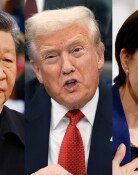Sea Mines
Mines laid across the 155-mile-long Demilitarized Zone have helped the two Koreas maintain a truce for 57 years after the Korean War. The area is full of anti-personnel and anti-tank mines that can destroy tanks 60 tons or heavier. North Korean forces occupied Seoul three days after attacking South Korea because of support from powerful tanks. Tanks, however, cannot move forward in an area full of mines.
Sea mines are divided into two types: moored mines that explode when touching vessels and influence mines that automatically attack vessels after sensing their traces. Moored mines are installed by dropping an anchor in waterways through which enemy vessels are expected to pass. Influence mines are hard to identify since they are attached to the sea bottom until sensing noise, rising up in the water, and then exploding. Influence mines are divided into mines responding to voiceprints, sound and magnetic fields.
Before a landing operation, sea mines must be cleared from waters. In the Korean War, U.N. forces exploded a sea mine off the coast of Incheon before its landing. Two days after the operation, South Korean and American Marines landed in Incheon on Sept. 15, 1950, thus changing the tide of the war. Oct. 20 of the same year was designated the day for the Wonsan landing operation, and bombing began. At the urgent request of then North Korean leader Kim Il Sung, who saw signs of the U.N. landing operation early, the Soviet Union placed lots of sea mines. Three U.S. vessels were seriously damaged by the secretly laid mines, forcing U.N. forces to postpone operations for six days.
A sea mine is known to be a potential cause of the sinking of the South Korean naval ship Cheonan. From which Korea the mine came from must be known. In a meeting of the parliamentary defense committee, Defense Minister Kim Tae-young did not rule out the possibility that a North Korean sea mine could have damaged the Cheonan, saying, In the Korean War, North Korea brought 4,000 sea mines from the Soviet Union and placed 3,000 of them in the East Sea and Yellow Sea. Many of the mines were removed but I dont believe all of them have been cleared from the sea. Though the South Korean military announced that it did not place sea mines near water, speculation is rising. A thorough investigation on the front and rear parts of the vessel is badly needed before a conclusion is reached.
Editorial Writer Lee Jeong-hoon (hoon@donga.com)







